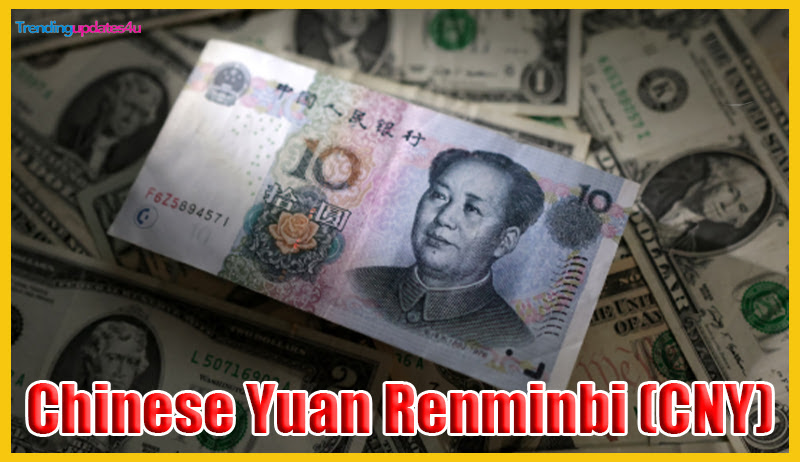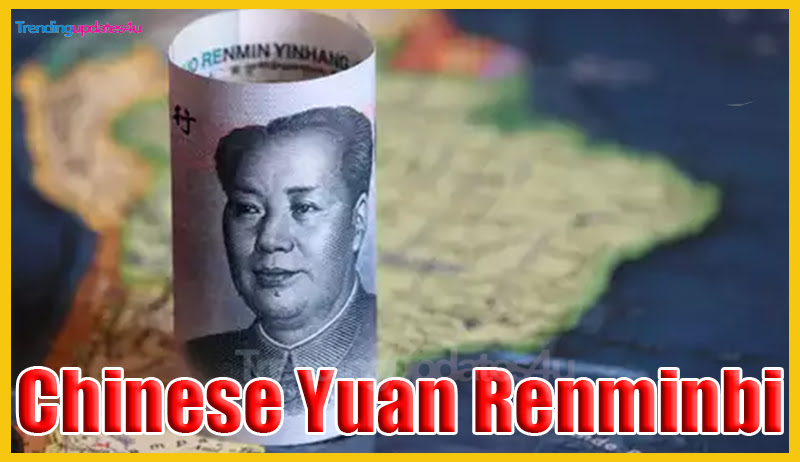Chinese Yuan Renminbi:- The Chinese Yuan Renminbi (CNY) is one of the most significant currencies in the global market, reflecting China’s economic strength. Despite its prominence, the terms “Yuan” and “Renminbi” are often used interchangeably, which can cause confusion. In this article, we will delve into the details of the Chinese Yuan Renminbi, exploring its history, structure, and key features that make it essential in global finance.
Chinese Yuan Renminbi (CNY)
The Chinese yuan renminbi is the official currency of mainland China. As previously mentioned, “yuan” refers to a single unit of the currency, while “renminbi” is the official name of the currency itself. The yuan is abbreviated as CNY, while renminbi is abbreviated as RMB. The renminbi was introduced by the People’s Republic of China following its establishment in 1949.
China’s national currency is issued by the People’s Bank of China (PBOC), the country’s central bank, which is headquartered in Beijing. In addition to printing the currency, the PBOC oversees monetary policy, fiscal policy, and financial regulation in China. The bank’s management team consists of a governor, six deputy governors, and a chief inspector. The symbol for the currency is ¥. One yuan is subdivided into 10 jiao, and one jiao is further divided into 10 fen.
Banknotes are available in denominations of one, two, five, ten, twenty, fifty, and one hundred yuan, as well as one, two, and five jiao notes. Coins in circulation include denominations of one, two, and five fen, as well as one and five jiao, and one yuan. Since the 1950s, several series of renminbi have been issued, each featuring its own distinct banknotes and coins.
Chinese Yuan Renminbi Details
| Feature | Details |
| Article for | Chinese Yuan Renminbi: Overview and History |
| Currency Name | Chinese Yuan Renminbi (CNY) |
| Abbreviations | CNY (Yuan), RMB (Renminbi) |
| Issued By | People’s Bank of China (PBOC) |
| Currency Symbol | ¥ (Yuan) |
| Units | Yuan (CNY) |
| Subunits | 1 Yuan = 10 Jiao; 1 Jiao = 10 Fen |
| Denominations (Banknotes) | 1, 2, 5, 10, 20, 50, 100 Yuan |
| First Introduction | 1948 (People’s Bank of China introduced the currency) |
| Currency Peg (Past) | Pegged to the USD from 1997 to 2005 (1 USD = 8.3 CNY) |
| Category | Trending |
The History of the Chinese Yuan Renminbi (CNY)
The history of the Chinese Yuan Renminbi is deeply tied to China’s political and economic changes. Here’s a brief timeline:
- 1948: The first edition of the Chinese Yuan Renminbi was introduced by the People’s Bank of China.
- 1955: A revaluation took place, where 1 new yuan was equivalent to 10,000 old yuan.
- 1978: China introduced a dual-track currency system, limiting the yuan’s use within the country while foreigners had to use exchange certificates.
- 1990s: The dual-track system was abolished.
- 1997–2005: The yuan was pegged to the US dollar at an exchange rate of approximately 1 USD to 8.3 CNY.
- 2005: The yuan moved to a floating exchange rate, allowing it to fluctuate but within a managed range.
In 2016, the Chinese Yuan Renminbi became a part of the IMF’s Special Drawing Rights (SDR) basket, further solidifying its importance in the global economy.
What Is the Chinese Yuan Renminbi (CNY)?
The Chinese Yuan Renminbi (CNY) refers to the official currency used in the People’s Republic of China (PRC). To clarify, Renminbi (RMB) is the name of the currency, while Yuan (CNY) is the unit of account for this currency. Think of it like the term “pound” in the UK, where the pound sterling is the official name of the currency, but pounds are the units used for transactions.

- Renminbi (RMB): Official name of China’s currency.
- Yuan (CNY): The basic unit of the currency.
- Symbol: ¥.
The currency is issued by the People’s Bank of China (PBOC), which is the central authority in charge of monetary policy in China. Yuan is divided into 10 jiao, and one jiao is further subdivided into 10 fen. The CNY is commonly referred to as a managed float currency, with a controlled exchange rate determined by the PBOC.
The Structure of the Chinese Yuan Renminbi (CNY)
The Chinese Yuan Renminbi (CNY) is structured in a way that ensures its functionality in both domestic and international markets. Below, we explore the different denominations and how the currency is issued, providing a clear understanding of its design and circulation.
Denominations and Coins
The Chinese Yuan Renminbi (CNY) is available in several denominations of banknotes. The denominations in circulation are as follows:
- 1 Yuan
- 2 Yuan
- 5 Yuan
- 10 Yuan
- 20 Yuan
- 50 Yuan
- 100 Yuan
Coins in Circulation
The Chinese Yuan Renminbi also includes various coins to facilitate daily transactions. The available coin denominations are:
- 1 fen
- 2 fen
- 5 fen
- 1 jiao
- 2 jiao
- 5 jiao
- 1 Yuan
Issuance and Control
The People’s Bank of China (PBOC) is responsible for issuing the yuan, and it also regulates the financial system. This central bank ensures the currency’s stability and is responsible for implementing monetary policies. Unlike a free-floating currency, the CNY is subject to a managed float exchange rate, which means it moves within a narrow margin around a base rate set by the government.
Special Considerations: Yuan vs Renminbi
While “yuan” and “renminbi” are often used interchangeably, it’s essential to understand their specific roles. The term Renminbi (RMB) refers to the currency itself, while Yuan (CNY) is the unit of currency. This distinction is akin to referring to pound sterling for the UK currency and pounds for the unit of currency.
For instance, when discussing the value of goods or services in China, we refer to them in yuan, such as a price of ¥339,800 for a car, but the currency in general is renminbi.
The Role of the Chinese Yuan Renminbi (CNY) in Global Markets
China’s economic policies, particularly regarding its currency, have profound implications for international trade and investments. The devaluation of the yuan in 2015 had far-reaching effects, triggering a trade war with the United States. China’s action was seen as a move to make Chinese exports more competitive on the global stage, while critics called it currency manipulation.
In 2016, the yuan’s inclusion in the International Monetary Fund’s Special Drawing Rights (SDR) basket marked a significant milestone for the currency. This move positioned the yuan alongside the U.S. dollar, Euro, Japanese yen, and British pound as a reserve currency used by global central banks.
Devaluation and Impact on Trade
The yuan’s devaluation in 2015 was part of China’s broader economic reforms. By making the currency cheaper, Chinese goods became more affordable internationally, giving China an edge in global trade. The U.S., under President Donald Trump, accused China of currency manipulation, which led to the imposition of tariffs on Chinese imports in 2018.
The trade war between the U.S. and China saw both countries imposing tariffs on each other’s goods, further influencing the yuan’s value and its impact on international trade dynamics. Despite the tension, the Chinese government maintained control over its currency, managing its value to ensure stability and continued economic growth.
Conclusion
The Chinese Yuan Renminbi (CNY) is more than just a currency; it’s a tool of China’s broader economic strategy. With its central role in the global economy and its inclusion in the IMF’s SDR basket, the yuan is likely to continue growing in significance. As China moves toward becoming a dominant global power, the Chinese yuan will undoubtedly play an essential role in shaping international finance.
Understanding the complexities of the yuan and renminbi will be crucial for investors, traders, and anyone interested in China’s evolving economic landscape. As the yuan’s influence expands, keeping an eye on its fluctuations and policy shifts will provide valuable insights into the future of global trade and finance.
FAQ’s
What is the Chinese Yuan Renminbi (CNY)?
The Chinese Yuan Renminbi (CNY) is the official currency of the People’s Republic of China. While “yuan” refers to the unit of currency, “renminbi” is the official name of the currency. The yuan is abbreviated as CNY and is used to represent the value of goods and services in China.
What is the difference between Yuan and Renminbi?
“Yuan” is the unit of account and refers to the currency itself, while “Renminbi” (RMB) is the official name of China’s currency. Similar to how the British currency is referred to as pound sterling while individual units are called pounds, the term renminbi is used for the currency, and yuan is the unit of exchange.
How many denominations are there in the Chinese Yuan Renminbi?
The Chinese Yuan Renminbi comes in both banknotes and coins. Banknotes are issued in 1, 2, 5, 10, 20, 50, and 100 yuan denominations, while coins are available in 1 fen, 2 fen, 5 fen, 1 jiao, 2 jiao, 5 jiao, and 1 yuan denominations.
What is the symbol for the Chinese Yuan Renminbi?
The symbol for the Chinese Yuan Renminbi is the ¥ sign. This symbol is commonly used in financial contexts to denote the currency.
What is the current exchange rate of CNY to USD?
The exchange rate of the Chinese Yuan Renminbi (CNY) to USD can fluctuate due to market conditions and government policy. For real-time exchange rates, it is best to consult a reliable financial service or currency converter.
Is the Chinese Yuan Renminbi freely traded?
No, the Chinese Yuan Renminbi is not a fully free-floating currency. It operates under a managed float system, meaning the currency’s value is allowed to fluctuate within a narrow band, with the People’s Bank of China intervening to maintain its stability.
What is the history of the Chinese Yuan Renminbi?
The Chinese Yuan Renminbi was introduced in 1948 by the People’s Bank of China. Since then, it has undergone multiple revaluations and currency reforms, including the implementation of a dual track currency system in the 1970s and the shift to a floating exchange rate in 2006.
What are the main coins used in China?
In addition to banknotes, coins are also part of the Chinese currency system. These coins include 1 fen, 2 fen, 5 fen, 1 jiao, 2 jiao, 5 jiao, and 1 yuan.
Why did China devalue the Chinese Yuan Renminbi?
China devalued the CNY in 2015 as part of its economic reforms aimed at making exports more competitive. This move also sparked tensions in international trade, especially with the United States, which led to a trade war. The devaluation of the yuan was seen as a way to boost China’s export-driven economy.
Related Post:-











